
Filipino Street Food Guide
When you truly want to get to know a place, there’s no better way than diving into its street food scene. Here in the country, Filipino street food can range from sweet to savory (from sizzling skewers of smoky barbecue to refreshing halo-halo shaved ice).
Whether you’re craving a hearty and affordable lunch to fuel your day or a sweet pick-me-up snack in between, the friendly and welcoming street vendors on every street corner are there to satisfy your every craving. So, ditch the fancy restaurants for delicious food and embrace the energy and authenticity of Filipino street food. Let your nose guide you through bustling markets and street corners, and prepare to be delighted by the explosion of flavors that await!
A Culinary Adventure Bursting with Flavors
When you eat street food in the Philippines, you do not only embark on an adventure bursting with flavors that satisfy your cravings. It is also a journey that reveals something about the country’s history and customs with every bite.
But with most Filipino street foods sold by street vendors at almost every corner, what is considered street food? Even better yet, what is the quintessential Filipino street food?
Fear not, fellow gourmands! Below is a Filipino street food guide to familiarize your palate with the local food culture and equip you to navigate this culinary adventure with confidence.
Popular Street Food in the Philippines
Depending on where you’re from, your idea of Filipino street food may vary. In the northernmost regions of Luzon, halo-halo, a shaved ice dessert with a variety of ingredients from sweetened banana, beans, corn kernels, Filipino rice crispies, jackfruit, nata de coco, macapuno, gulaman, topped with cream caramel and taro ice cream, might be a popular street snack.
In contrast, down south in Mindanao, grilled maranao sausages served with peanut sauce might be more common.
However, there are also common Filipino staple street snacks that you will likely see in Metro Manila, the country’s capital, as well as in most rural towns across the islands.
These are the snacks that truly define Filipino street food culture. Here are just a few bites of these must-tries:
Everything Chicken
Nothing goes to waste
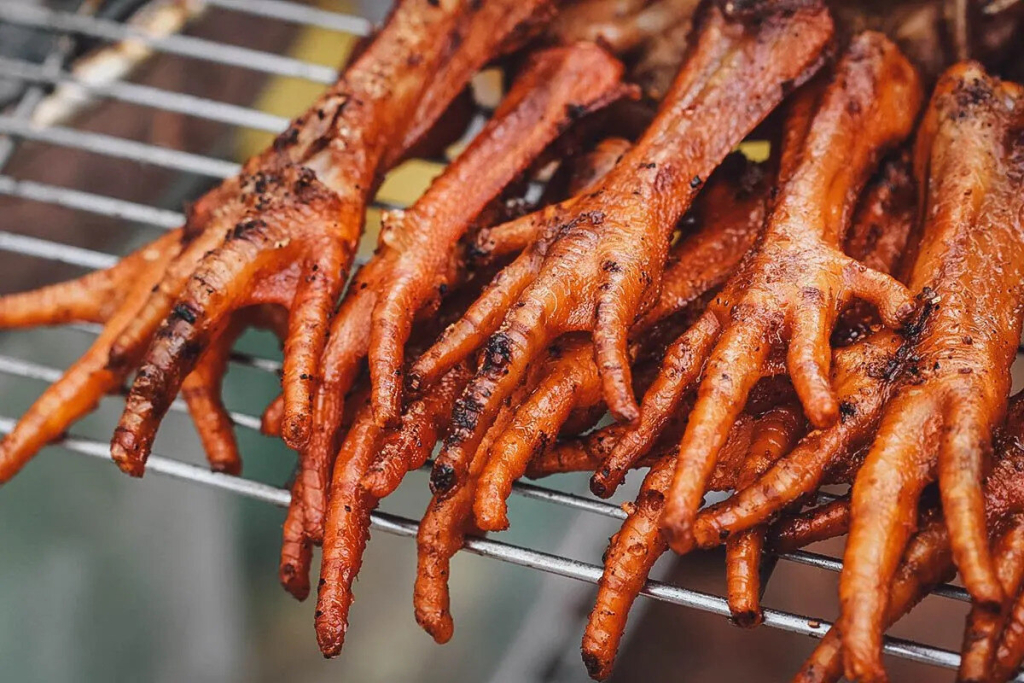
Like other Asian countries, Filipinos love a good roasted chicken, and it is common to see stall after stalls advertising lechon manok along the streets. The sight of these golden-brown birds rotating on spits is enough to make your stomach rumble. But to prepare a roasted chicken, however, you will need to remove most of the chicken’s parts, like its innards, head, and feet.
Here’s where Filipino resourcefulness shines. Instead of throwing these away, Filipinos have found a way to make good food out of “leftovers.” This is where the true adventure for the curious eater begins!
As such, it is common to see hawkers selling marinated and grilled chicken feet, grilled chicken heads on skewers, and crispy chicken skin.
Chicken intestines or fried isaw on the other hand, get cleaned, and they also go on sticks on zigzags to make the fried isaw. The same goes with the chicken liver, gizzard, and blood.
Often, these chicken parts are covered with a sour barbecue sauce that gives off an easily identifiable smokey aroma as soon as you step out on the streets.
As for the chicken skin, these are also deep fried to a texture that resembles chicharon and are often sold separately. Sweet and sour sauce or soy sauce with lemon or spicy vinegar are the best dipping options for the crispy chicken skin.
Pork Street Foods
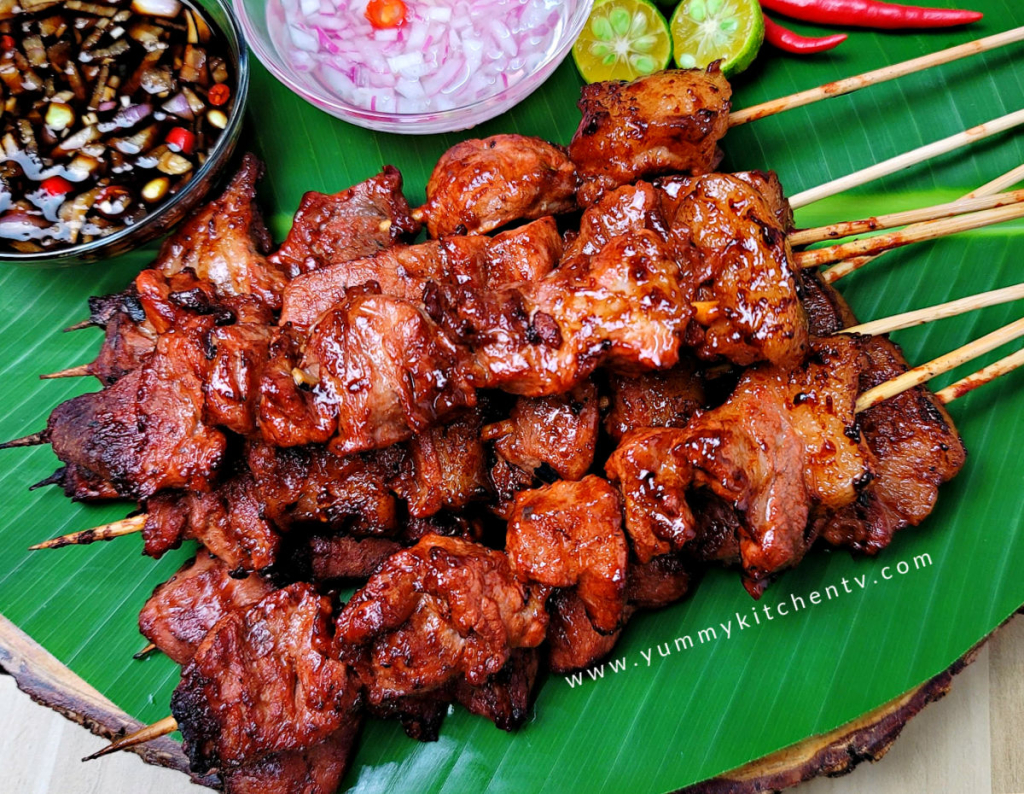
Like the chicken, Filipinos are also inventive when it comes to saving many parts of pork.
In addition to the meaty and fatty pork barbecue (or pork BBQ in short), Filipino street food stalls would also have every other part of the livestock, from the pig’s blood to the pig’s ears. This includes the liver, intestines, and every other edible part people could save.
Apart from their delicious flavors, these street foods also have creative names based on what they look like. For instance, the cubed pig’s blood on skewers looks like cartridges, hence its name, Betamax. The same is true for chicken blood. Pig’s ears, on the other hand, are called Walkman.
This naming convention is also true for chicken parts like the Adidas for the chicken feet and IUD (as in the intra-uterine device) for the intestines. Like the other popular Filipino street foods, the secret is in the sauce that brings out their delicious flavors and in the dips that complete the experience, staples of which are soy sauce, sweet and sour barbecue sauce, sweet sauce, and spicy vinegar sauce.
While they may sound uncanny at first, these flavorful pork and chicken skewers often betray their weird names.
Other Best Street Foods
In addition to pork and chicken street foods, the Philippine streets also have no shortage of unique street snacks. Some of them are only available in the Philippines, and the others are borrowed reimagination of foods from other cultures.
Here are some of the favorites among the locals:
The fertilized duck eggs popularly known as Balut
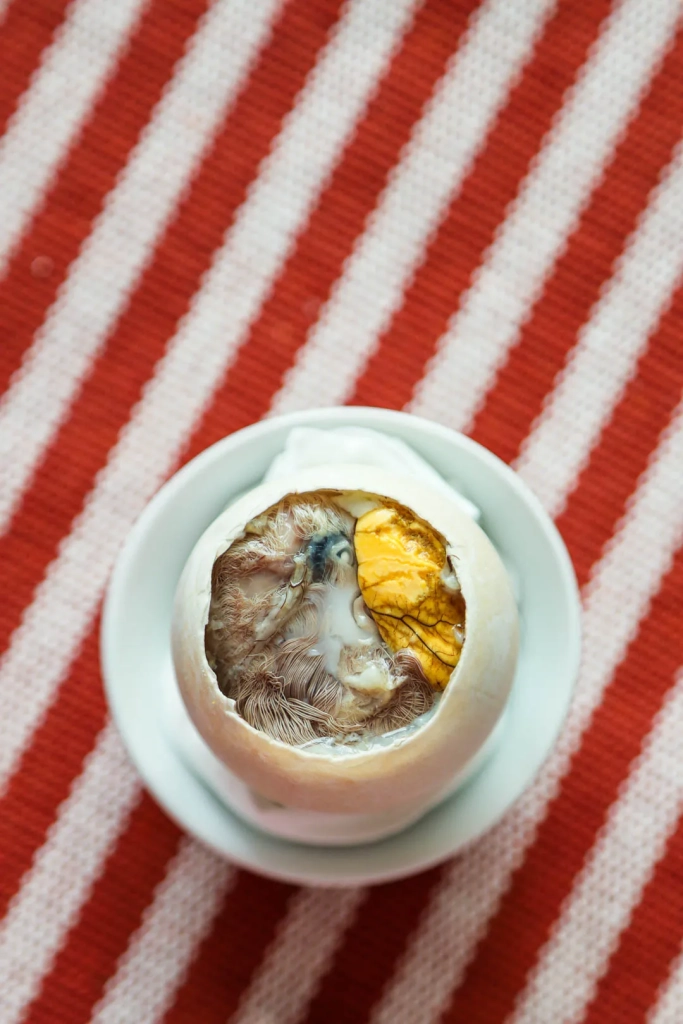
Balut is a fertilized duck egg that is boiled and enjoyed as a savory street food. While a balut’s partially developed embryos and rich liquid may not be for everybody, it is one of the most unique street foods you can try in the Philippines and considered street food loved by many.
Kwek-Kwek

Made of quail eggs coated in orange food coloring batter, kwek-kwek is a delightful deep-fried street food commonly enjoyed as a midday snack.
This often comes with a tangy or spicy vinegar dip that enhances the flavor of the kwek-kwek. In other cases, the dip may also be a homemade sweet and sour sauce or a sweet chili sauce.
Fish and Squid Balls, Chicken Balls
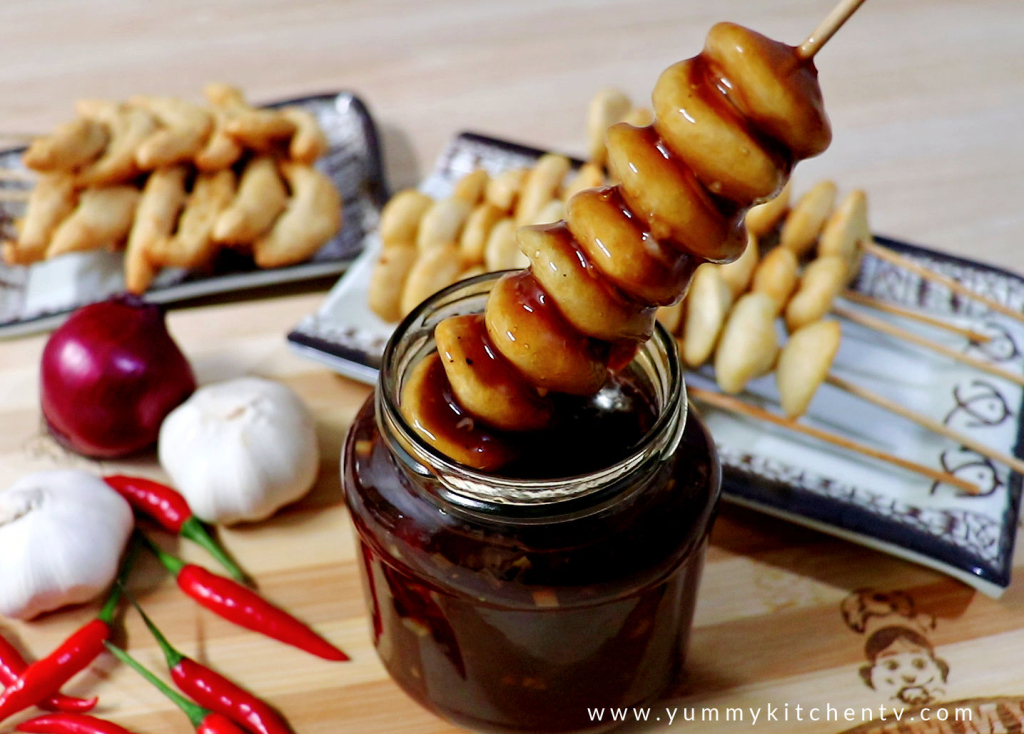
Fish balls are savory street snacks made from minced fish paste, shaped into balls, and deep-fried until golden brown. Squid balls, on the other hand, are almost identical, except they are made from ground squid meat, which gives them a chewy texture.
Fish balls, chicken skin, chicken balls, and squid balls often come with a thick, sweet sauce or spiced vinegar that enhance their taste with a touch of sweetness and tanginess and a little spice.
Siomai
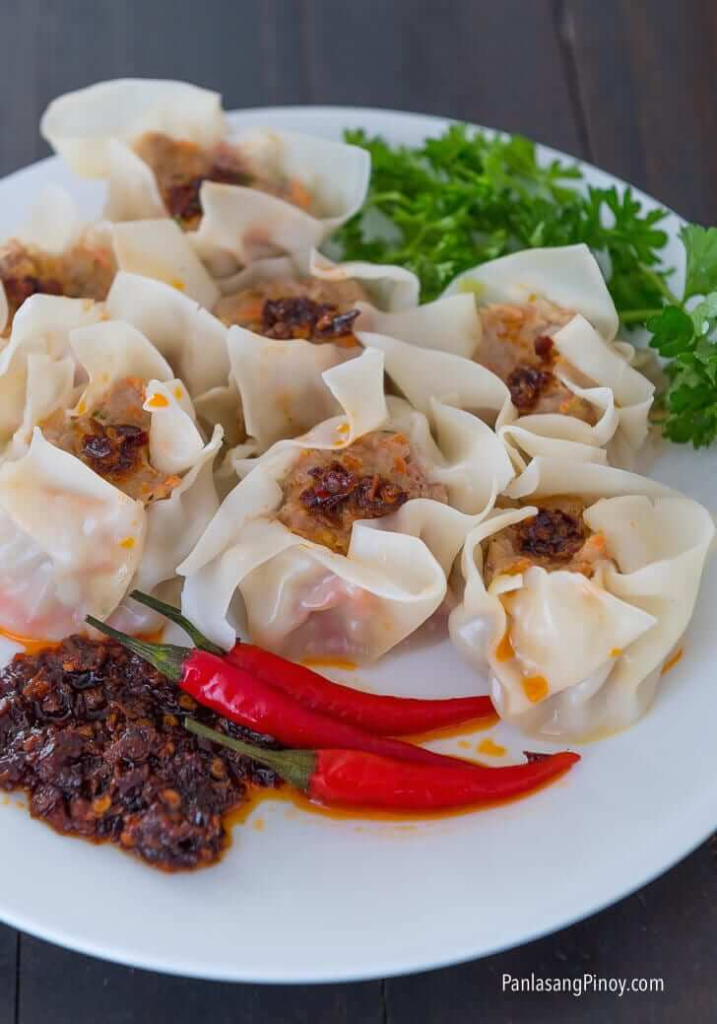
Siomai is a local take on dumplings that offers a savory filling of minced pork or shrimp packed in a spring roll wrapper.
These bite-sized delights are either steamed or fried, offering a choice between soft and tender or crispy textures. Siomai is typically served with soy sauce and calamansi juice as a dip.
Lumpia
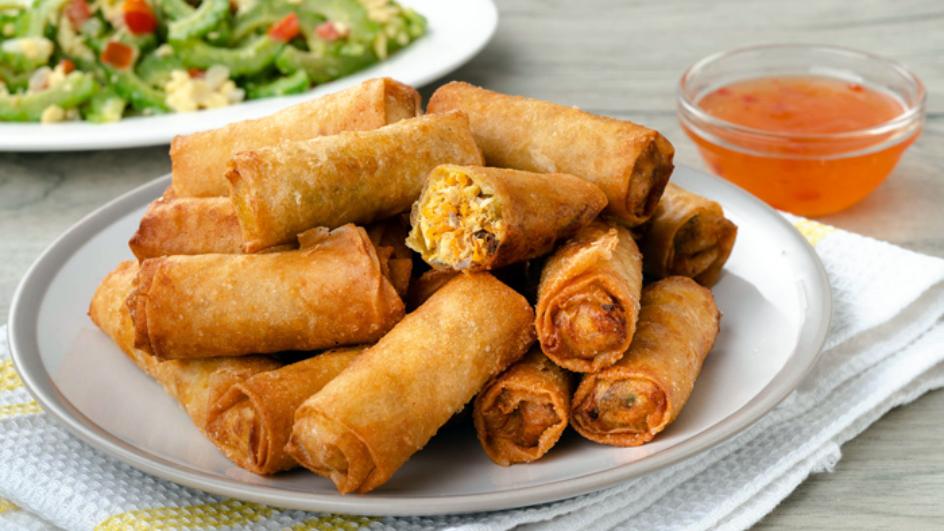
Lumpia is a local spring roll that has become a quintessential dish in Filipino cuisine and street food in the Philippines. Its fillings are often pork, bean sprouts, and other vegetables tightly rolled in thin spring roll wrappers and deep-fried until golden and crispy.
Filipino Empanada

Filipinos also have a local version of an empanada that is both sweet and savory. For the fillings, the most common ones are a mixture of ground meat, peas, carrots, sweet potato, cheese, and raisins inside a dough. This is then deep-fried until golden brown and crunchy.
Okoy (Filipino Shrimp Fritters)
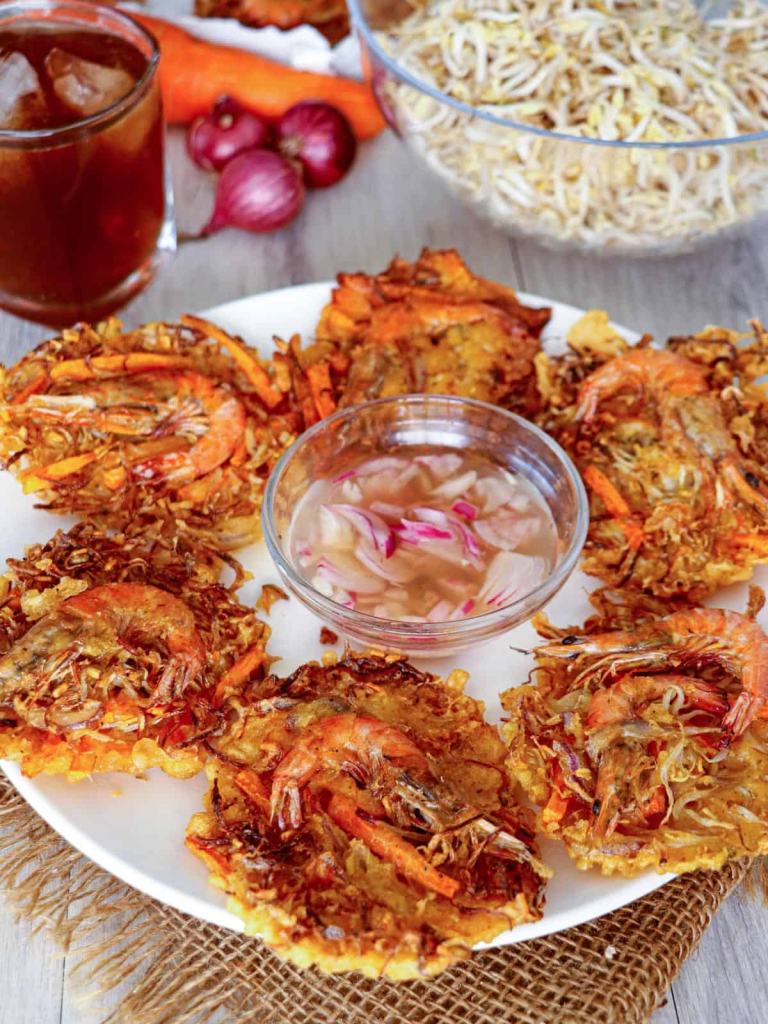
Okoy is a fritter made from small whole shrimp mixed with a batter of mung bean sprouts and flour. These crispy and flavorful fritters are typically deep-fried until golden brown, resulting in a crunchy exterior and a tender, savory interior.
Sweet Filipino Street Foods
Sweet delights to satisfy the sweet tooth
In addition to its extensive savory options, your must-try Filipino street food list should also include its sweet delicacies. Here are some of the best street foods to satisfy your sweet tooth:
Banana Cue and Camote Cue
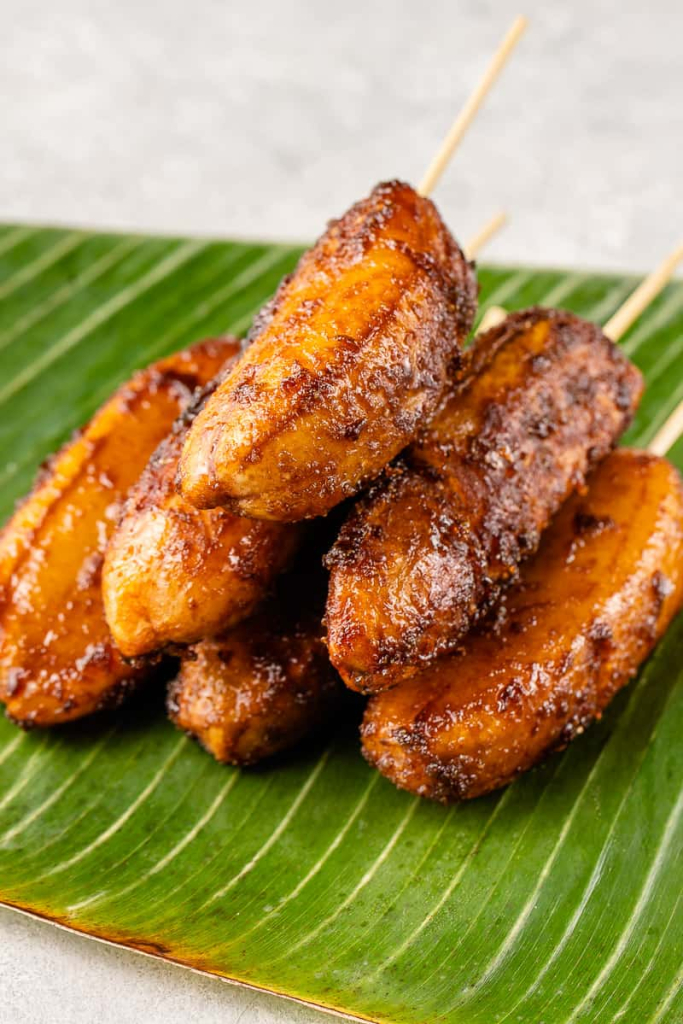
Banana cue (also known as banana Q) is a beloved local delicacy made by coating ripe saba bananas in caramelized brown sugar. This combo offers a balance of the caramel sweetness and the natural flavors of the banana that makes banana cue a satisfying treat to enjoy in just a few bites.
Similarly, camote cue is made using the same exact process; it only uses sweet potatoes coated in the same caramelized brown sugar instead of bananas.
Bitsu-Bitsu
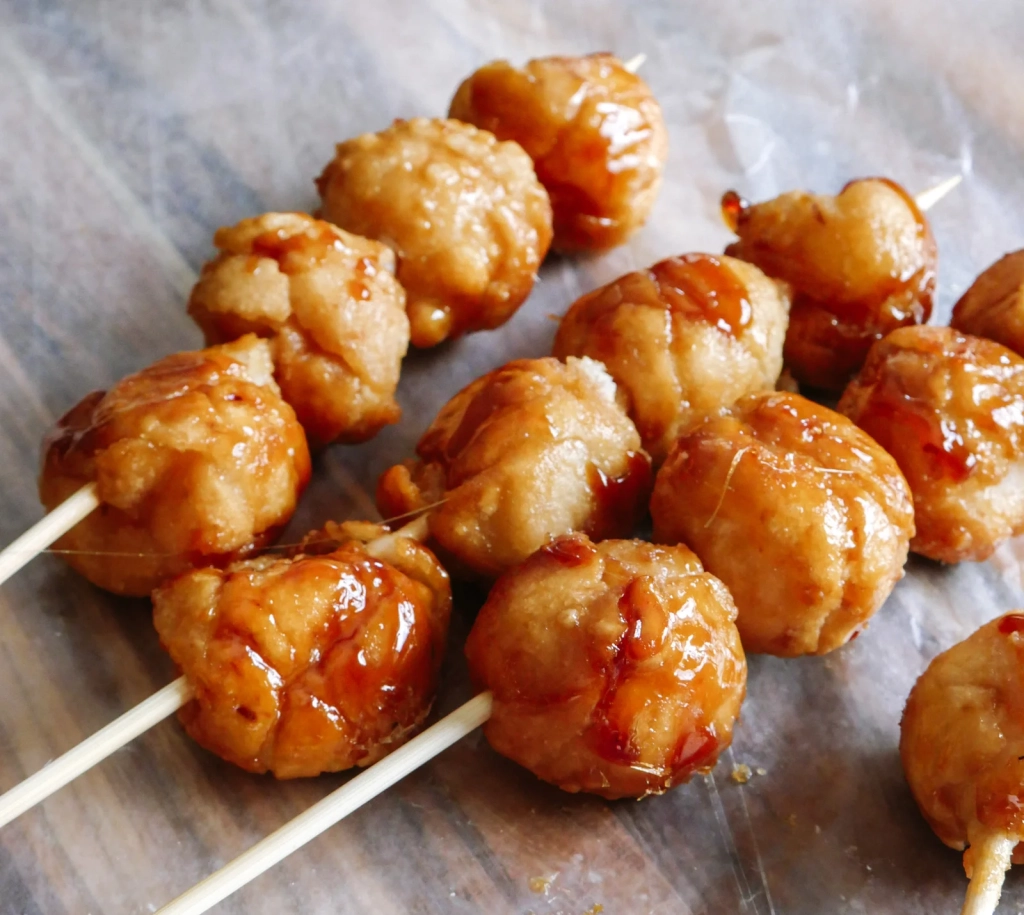
Bitsu-bitsu is a small ball of glutinous rice flour dough that is deep-fried until they are golden brown and crispy.
These bite-sized treats, often coated in sugar, have a crunchy exterior and soft, chewy interior. It is especially popular during festive occasions or simply as a sweet indulgence throughout the day.
Taho

Taho is another beloved local street food made of the layering of soft tofu, chewy tapioca pearls (sago), and sweet arnibal (brown sugar) syrup. Unlike usually street food, this treat is typically peddled by vendors who call out “Taho!” as they pass by houses.
With its natural ingredients and sweet flavor, taho is both a nutritious and satisfying snack option at any time of the day.
Kutsinta
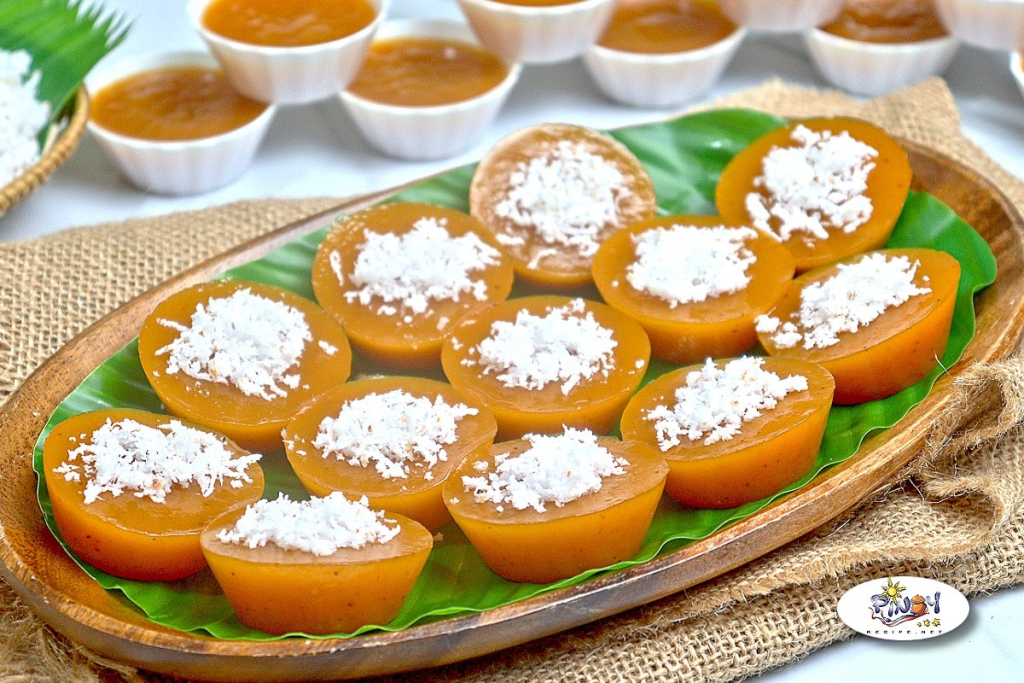
Kutsinta is a Filipino steamed rice cake characterized by its chewy texture and slightly sweet flavor. Traditionally, it is topped with fresh shredded coconut, adding a nutty aroma to the treat.
However, contemporary versions of kutsinta may feature toppings such as sweetened condensed milk for an extra layer of sweetness.
Coolers
Best pairing for Filipino desserts and savory snacks
Eating street foods in the humid streets is best paired with refreshers. Here are some of the cold treats that are best paired with Filipino desserts and savory snacks:
Dirty Ice Cream
The Filipino dirty ice cream is one of the beloved local delicacies that is prized for its homemade charm.
Note, however, that the term “dirty” here is just a misnomer for ice cream that is sold on the streets rather than in malls or grocery stores.
Traditionally made with coconut milk, which is abundant in the country, this street ice cream offers a richer texture and taste that is not quite like any other ice cream.
Some locals also enjoy this dessert by turning it into a sandwich using soft bread buns.
Halo-Halo

Halo-halo (which literally means “mix-mix” in English) is a popular Filipino dessert that lives up to its name. It is typically a mixture of finely shaved ice layered with ingredients such as sweetened fruits, beans, jellies, rice crisps, ice cream, and even leche flan.
All of these are then topped with evaporated milk that holds all the flavors together. The dessert is meant to be thoroughly mixed before eating for a refreshing and indulgent treat perfect for cooling down on a hot day.
Street Food in the Philippines: A Glimpse Into Filipino Culture
Like other Southeast Asian countries, our street food is an extension of the Filipino cuisine. This means that it revolves around resourcefulness, using local ingredients, and saving every bit of edible food parts.
Moreover, Filipino street food is as varied as Filipino dishes. As you explore regions, what is displayed along the streets may vary.
That is to say that the food stands that adorn a street corner in Metro Manila are just the tip of the iceberg that is Filipino street food.
Ultimately, these popular Filipino street foods are also a reflection of the local attitude towards food: resourceful, cost-saving, and community-based.
A true Filipino home

Come home to a community that preserves and nurtures our well-treasured Filipino values. See how Camella keeps the spirit of community alive in its neighborhoods.

Celebrate Life’s Milestones in Camella!
Make unforgettable memories in a Camella home.
Our communities are designed to elevate your living experience.


